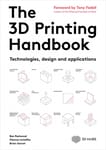So, you want to capitalize on the possibilities 3D printing for your business, but to make a sound decision you want to assess the 3D printing price first? Or, you’re a hobbyist who wants to get something printed in a pro material? You have come to the right place!
Table of Contents
There are many ways you can approach the issue of 3D printing prices. This article is structured with different vectors in mind to look at 3D printing prices.
First, we will tackle the most pressing question of all: “Should you buy your own 3D Printer or use a 3D Printing Service?”.
If you decide that you indeed want to buy a 3D printer, it is time to assess your 3D printing needs and align them with the available 3D printing technologies and the 3D printing price.
The section titled “Technologies” will bring you up to speed on the 3D printing technologies available on the market and their respective 3D printing prices.
In the following section, you can learn the basics about 3D printing materials. Apart from the 3D printing price, you also learn about the typical applications and material properties.
Finally, we present a number of case studies to illustrate the benefits and the 3D printing price for particular industries.
However, if you simply want to get your parts printed quickly and at a great price, try our 3D Printing Price Comparison Service.
Buy your own 3D Printer or use 3D Printing Service?
Price of Owning a 3D Printer
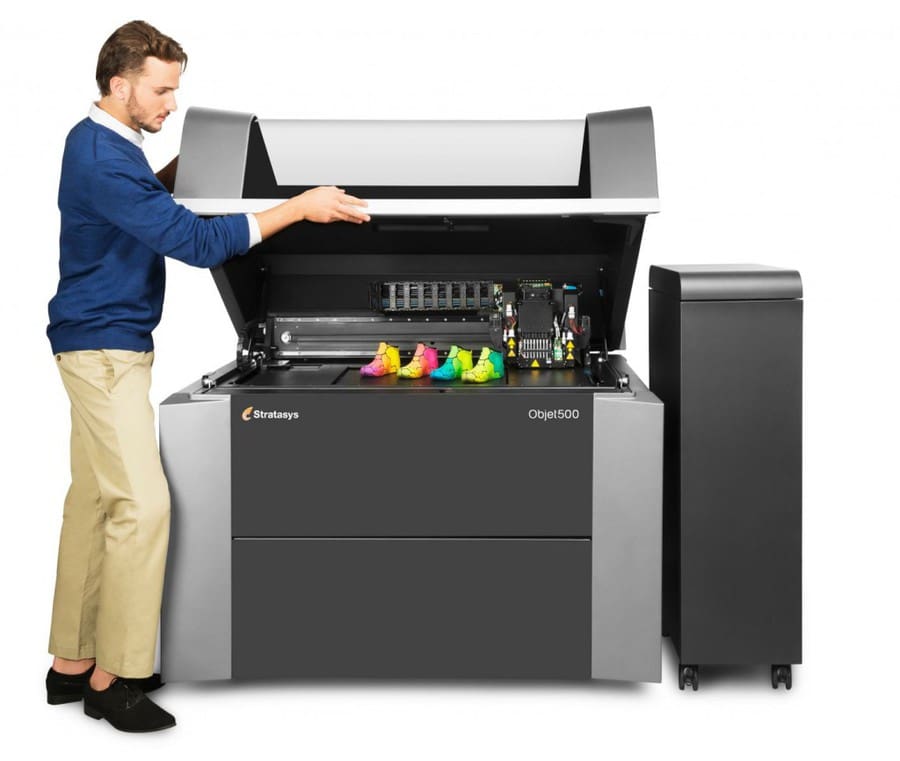
Buying a 3D printer can be a costly investment, but if you plan on 3D printing a lot, it’s a worthwhile purchase and will help reduce the 3D printing price over time.
Efficiency For one, there is efficiency. Let’s assume you work in a visual design office and use visual prototypes, you won’t need new iterations as frequently. Then, a few days of lead-time and shipping will not have the same impact, using a 3D printing service will reduce your 3D printing price significantly. However, in an engineering office that is frequently testing functional prototypes. Buying can be especially worthwhile, as frequent iterations are required and lead-times and shipping can take longer when using 3D printing services.
Materials Another matter you should consider are the types of materials you are likely to use (see below). As a rule of thumb, materials like plastics and resin are undemanding both in cost and in setup. However, 3D printing metals will significantly increase your 3D printing prices, both in terms of the cost for the raw materials and the printers. Over time, the cost of personnel will have the biggest influence on your 3D printing price. Not only do you need experts to draw the CAD of your 3D designs. But, because of the extreme temperatures needed to work these materials, you also require staff to supervise these 3D printers. A 3D printing service will print your designs to perfection, and at a fixed 3D printing price.
Maintenance The next item on your 3D printing bill is maintenance. Like any piece of mechanical hardware, 3D printers are susceptible to wear. So from time to time, certain components need to be switched. Usually, these consumables are available from the original manufacturer. Depending on the type of 3D printer they both add substantial amounts to your total 3D printing price, but also decrease the 3D printing price by extending the machine’s life expectancy.
Electricity Depending on where you live, electricity can be a commodity or a staple that you don’t have to worry about. If you belong to the former, you can stop reading here. However, if the cost of electricity is an issue for you, you should do your research before you buy a 3D printer. There are no simple guidelines, we can give you. But generally, much depends on the melting point of the material you want to 3D print. Making metal 3D printing once again a driving force of 3D printing prices.
User Education Let’s take a closer look at the cost caused by you or the employees responsible to do the 3D printing for you. Although many 3D printer manufacturers have gone the extra mile to make their machines user-friendly, 3D printing is still not as simple as using a Xerox-machine. So, in your bill of 3D printing prices, you should add some time for training until you or your staff are trained to produce prints in a consistent quality. This also means that you should be prepared that for failed prints. Even old hands will occasionally produce scrap. If you plan to implement 3D printing into your business, you should factor some time and material for user training into your overall 3D printing price.
Price of a 3D Printing Service
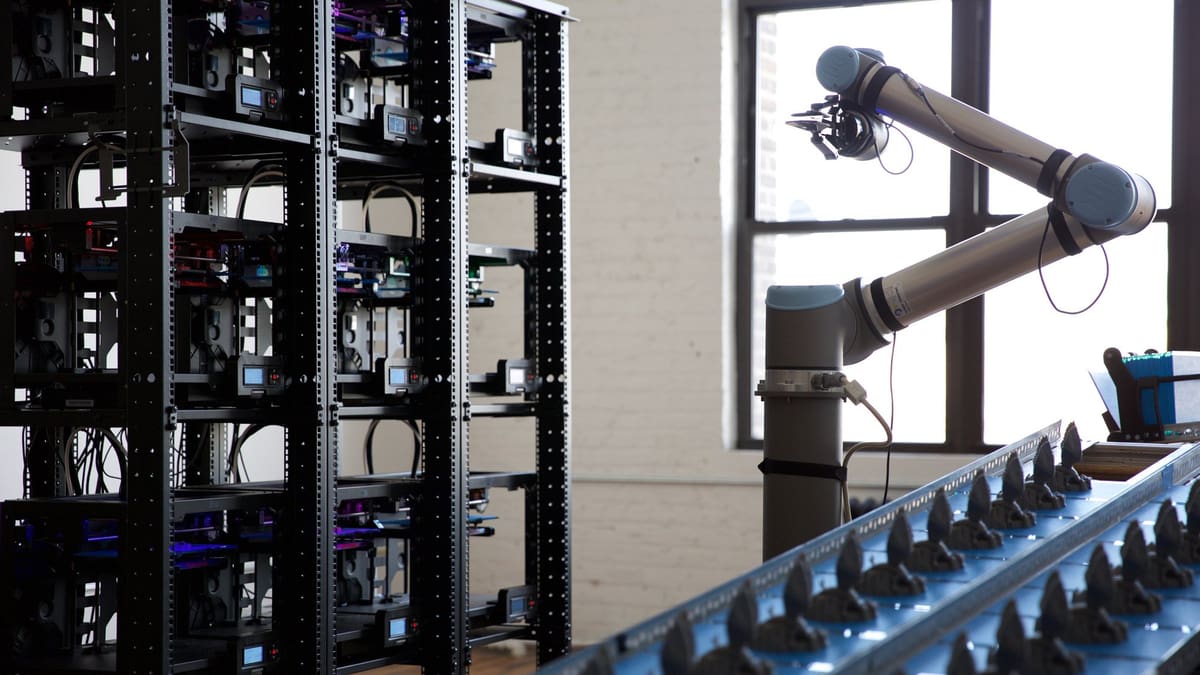
Setting up your own dedicated 3D printing workshop is not the only option. For all the companies who don’t want commit to these amounts of money, there is an entire industry ready to fulfill your every wish and at moderate 3D printing prices. Some of these 3D printing services are heavily specialized. For example, some cater to the needs of architects. Others are strong in functional prototypes for engineers, and then there are services that blend rapid prototyping with low volume production.
Quality Besides the 3D printing prices, why should you outsource to a service provider? For one, you don’t have to worry about the quality control of your objects, as you might with a 3D printer at your office. The logistics of printing your order are handled by professionals, to an optimal standard, and typically fulfilled within a reasonable time-frame at a reasonable 3D printing price.
Also, many services out there will gladly print your 3D file in the technology and the material you have chosen and send it to you “as is”. This is fine if you already are an old hand in 3D printing and know what you are doing. If you are only getting your feet wet, we recommend, that you really should look out for services that advertise their know-how in engineering and testing. Based on their experience, they can assess your file and recommend the right 3D printing technology and material for your purpose.
Lead-time and Shipping However, there are a few things to look out for. If you are keen to iterate different versions of your design in quick succession, then 3D printing services may not be the best choice. Lead-time and shipping take up between 4 four days and up to a full month for at a regular 3D printing price. If time is of the essence and you can afford the higher 3D printing price, look out for providers that offer overnight services.
Time The most basic factor that determines your 3D printing price is the size of the design. The bigger, say an elephant, the more material is needed to produce it. What many customers of 3D printing services don’t realize is that they also pay for the time needed to print your design. This becomes especially palpable when you use technologies that allow stacking of unrelated components to utilize the available build volume to the maximum. As a rule of thumb, simple shapes are easier to combine with other components into one build than designs with intricate branches.
Extras After the print is complete. You can often choose from a wide range of finishing options that enhance the printed part’s visual appeal. If you are fine with the “as-is look”, just leave it and cut a big chunk out of the 3D printing price.
Learn more about 3D Printing Services in this article: Parts On Demand: Top Online 3D Printing Services 2025
Check our own All3DP 3D Printing Price Comparison Service! to find the best price for your part.
3D Printing Needs
So you have decided that you want to get 3D printer of your own. As a first step, assess your 3D printing needs in terms of monetary constraints, functionality, the desired production volume, and efficiency. You then get pointed to the 3D printing technologies and materials that yield the best 3D printing price for your needs.
Consumer 3D Printing
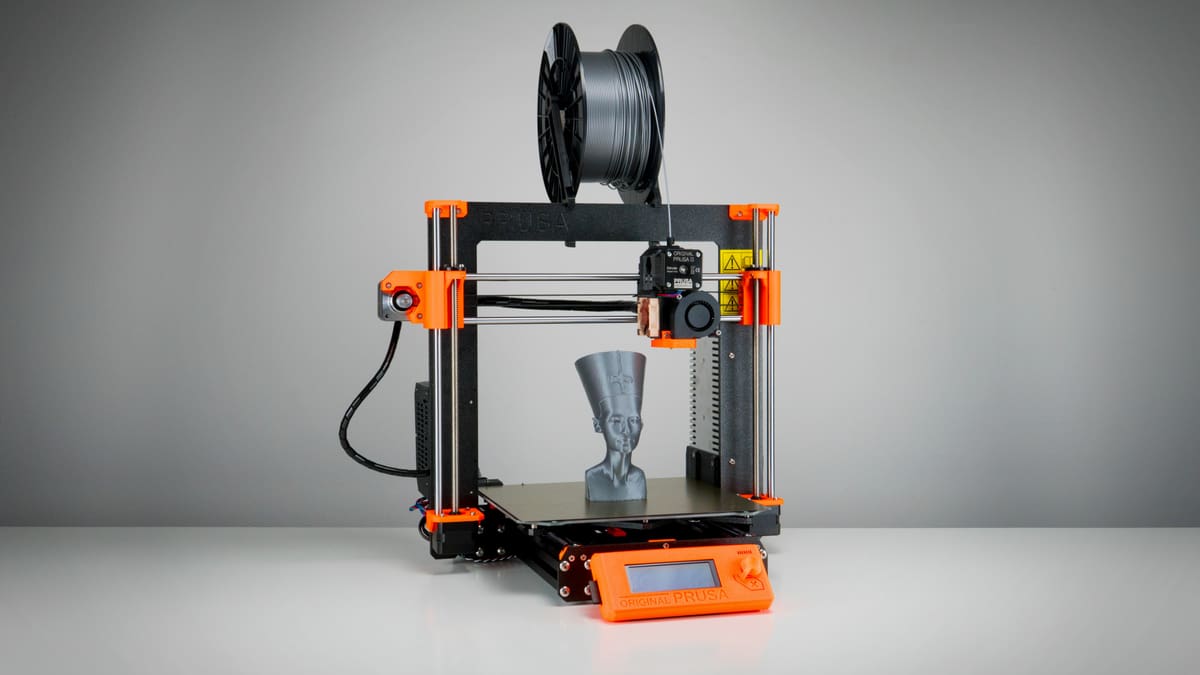
The consumer 3D printing market has exploded over the last years. Anyone print accessories for their iPads, parts for their cosplay, or custom parts for ambitious Maker projects.
The range of possibilities is vast, even if you are not ready to spend large amounts on the 3D printing price. Mostly you will print plastic using FDM printers, but wood and even metal filaments can be printed for decorative parts. A PancakeBot even allows you to create fanciful edible prints. In this segment, there are even a handful of SLA printers that are able to achieve high-resolution prints.
You can buy a workable machine from less than $100. At this price point, you cannot expect huge build volumes or commodities like heated beds. However, if you have a little more dough, you can get fairly powerful FDM printers that produce relatively large parts at a constant quality and at a great 3D printing price.
Want to some money and get a great 3D printer? Then consider DIY-kits; they give you a better 3D printing price than the fully assembled versions. But watch out! There are DIY kits and there are DIY kits. Before you order, check how much work needs to be done and whether you feel comfortable assembling a complex machine like this.
Don’t miss:
The Best DIY 3D Printer KitsThe consumer 3D printing market is In this price-range you can also get AiO machines that combine 3D printing, with other technologies like laser engraving or CNC machining. Such packages will not necessarily decrease the 3D printing price as such. But you save money by buying three separate machines.
Available technologies: Mostly Material Extrusion printers, a few SLA/DLP printers with a small build volume
Applications: Visual models, miniatures, functional components for DIY projects
Production Volume: Individual parts
Efficiency: Due to relatively small build sizes on desktop printers its often not possible combine parts into one build to speed up setup. FDM does not speed up by using build volume to maximum capacity.
Professional 3D Printing
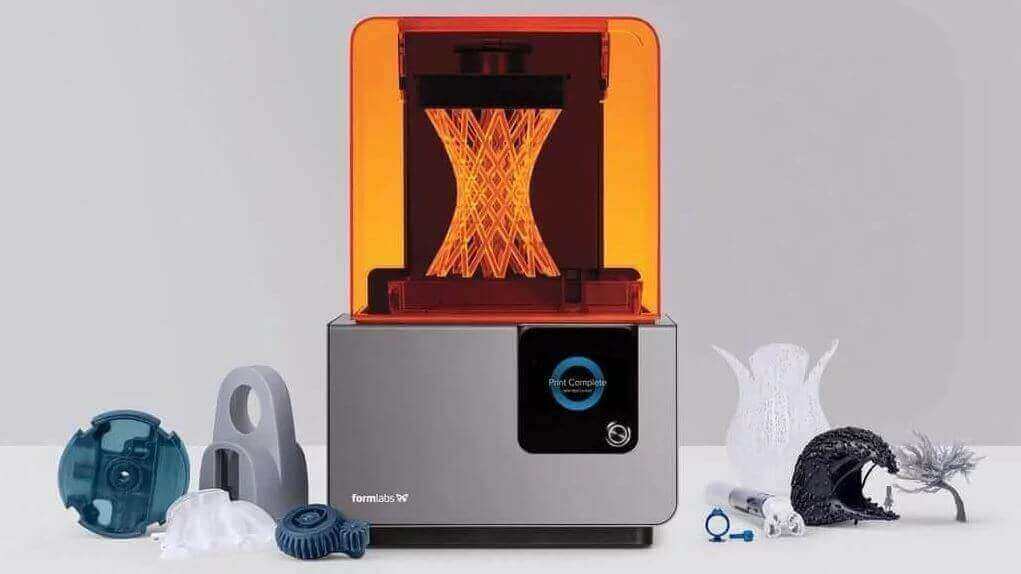
Whether you want a 3D printer to prototype parts for your design company, or produce end-use products on a small scale for your engineering office, knowing what options you have will help you settle on the optimal choice.
In the last few years, we’ve seen the consumer market become flooded with extremely cheap desktop 3D printers. To a lesser extent, the same trend has been taking place on the professional market. This means small businesses and prosumers looking to purchase a professional 3D printer, there are more options available than ever before.
Don’t miss:
Top 6 Professional 3D Printers Under $10,000One way to tell consumer and professional 3D printers apart is the quality of the printed parts. It’s true that you can get good prints out of cheap desktop machines, but that requires quite a lot of tinkering. Professional 3D printers, on the other hand, are built from the ground up to print your parts to high standards of quality.
Obviously, higher quality also means higher 3D printing price. But at this level, many powerful FDM printers and SLA printers are available. In addition, more advanced 3D printing technologies come within reach. There are a handful of affordable SLA printers that open up new vistas of prototyping. Thanks to the efforts of one manufacturer, even Metal 3D printing has become a feasible option for small businesses and ambitious prosumers.
Available technologies: Many powerful Material Extrusion printers, SLA/DLP printers, SLS printers, one Metal printer
Applications: Functional Prototypes, Visual Prototypes, Architectural Models, End-use parts
Production Volume: produce small series of parts like prototypes with limited functionalities, Molds for limited production of functional parts
Efficiency: Higher speeds and bigger volumes than consumer 3D printing
Industrial 3D Printing
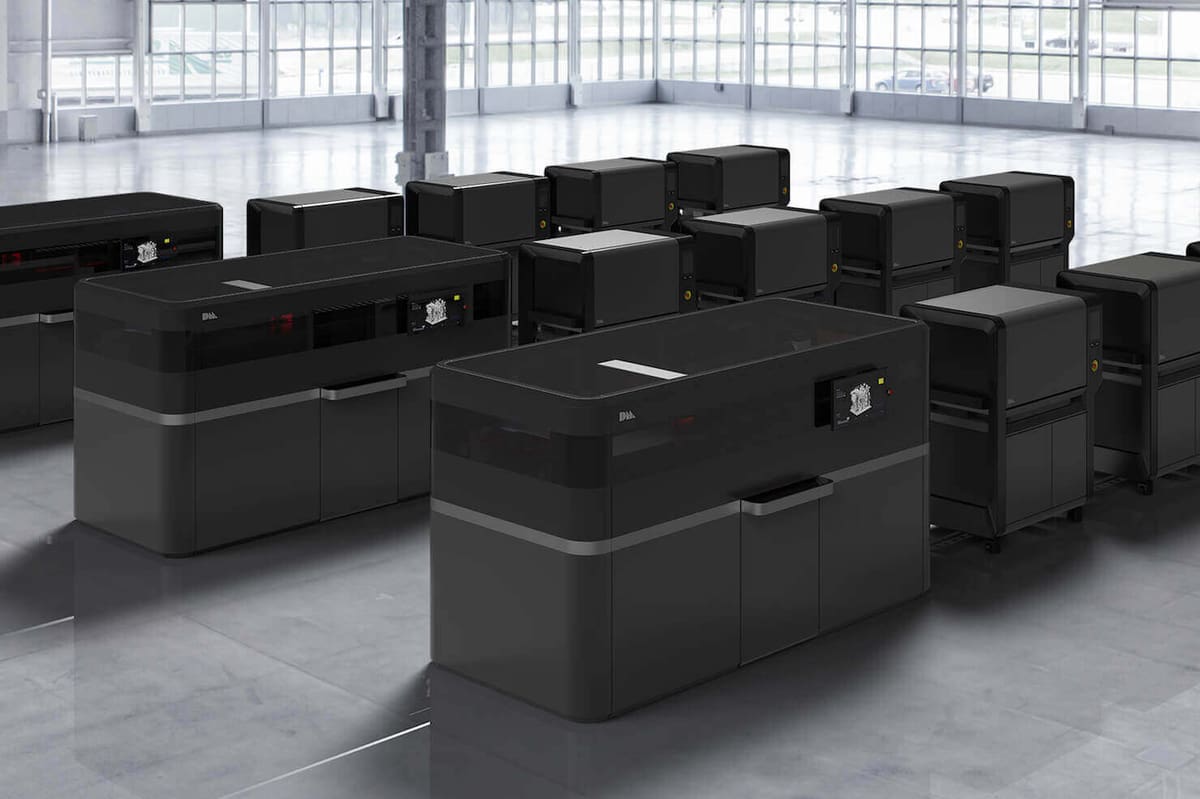
Industrial 3D Printing encompasses the complete range of 3D printing technologies. This includes different metal 3D printing technologies that can create solid metal components with relieved stress and enhanced material properties. Components created in these machines are used in the most demanding of applications like producing turbine blades for jet engines. In this segment of 3D printing, you can also harness binder jetting, a technology that allows users to create objects that not only look like the finished product but also behave like them.
Many industrial 3D printers boast huge build volumes of half a meter in one dimension. Making them especially well suited for manufacturing and promising to return the investment of even large 3D printing prices.
However, in this league, the currency is not having the largest build-volume, but increasing productivity. This is where modularity comes in. The 3D printer itself can be integrated into a sophisticated system of modules that are tailored to specific functions of the workflow. Although such nifty systems come with a hefty 3D printing price tag, the investment will pay off over time. The reason is that such setups are capable of running 3D printing factories 24/7 without delay.
Don’t miss:
Conversely, customers of industrial 3D printers can also expect greater user-friendliness and material economy. HP’s Jet Fusion 3D printing solution offers an end-to-end production ecosystem that is built around a convenient cartridge system and reclaims reusable material. Functionalities like this are not merely PR, but can decrease the 3D printing price substantially.
Available technologies: Material Extrusion, SLA/DLP , SLS, Material Jetting, Binderjetting, DMLS, EBM, SLM
Production Volume: Large series production
Applications: Fully functional parts made of high-end materials
Efficiency: Compared to traditional manufacturing technologies, highly efficient as it is not necessary to create dedicated tools or molds to produce complex component such as turbines. lead times are reduced from weeks into days
Technologies
One of the main challenges facing newcomers to 3D printing technology is distinguishing between the different processes available. “3D printing” is actually an umbrella term that encompasses a group of distinct 3D printing technologies.
To learn more about these technologies — including design rules for 3D printing and how to find the best 3D printing materials — we recommend you pick up a copy of The 3D Printing Handbook from 3D Hubs, available now from all good bookshops.
Material Extrusion (FDM/FFF)

Material Extrusion, often known as Fused Deposition Modeling (FDM) or FFF (Fused Filament Fabrication), is the 3D printing technology with the lowest 3D printing price. Here is how it works: A spool of thermoplastic filament is pushed through a printer nozzle in the extrusion head. The nozzle is heated to the desired temperature, causing it to melt.
The printer then moves the extrusion head along predetermined paths, laying down the molten plastic onto a build plate where it cools down and solidifies. Once a layer is complete, the printer proceeds to lay down another layer. This process of printing cross-sections is repeated, building layer-upon-layer, until the object is fully formed.
Depending on the geometry of the object, it may be necessary to add support structures, for example, if a model has steep overhanging parts. These support structures are removed after the part is printed, adding to the overall 3D printing price.
Technologies like FDM are beyond any doubt the most common 3D printing technology today. In terms of 3D printing price, the relatively simple mechanism and affordable materials make this the most accessible technology to non-professionals. Nonetheless, FDM printers are a common sight in industrial printing factories as well – which includes a higher 3D printing price.
Compared to SLA/DLP technologies, material extrusion results in a higher 3D printing price when used for visual prototypes.
Materials: Thermoplastic filament (PLA, ABS, PET, TPU), Ceramics
Efficiency: One of the slower 3D printing technologies.
Applications: Electrical housings, Form and fit testings, Jigs and fixtures (Design, Manufacturing) Investment casting patterns (Jewelry), Prosthetics (Medical)
Typical Target Group: Consumers, Hobbyists, Professionals, Industrial Manufacturing
Price Span: from $100 to more than $250,000
Vat Polymerization (SLA/DLP)
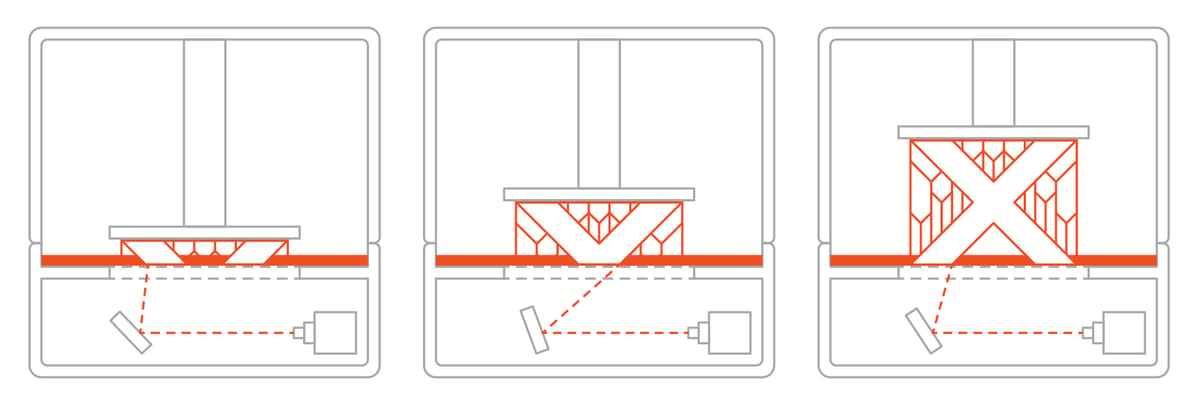
Vat Polymerization is a 3D printing process where a photo-polymer resin in a vat is selectively cured by a light source. The two most common forms of Vat Polymerization are SLA (Stereolithography) and DLP (Digital Light Processing).
What’s the difference between these types of 3D printing technology? The key is the light source they use to cure the resin. SLA printers use a point laser, that is aimed at a vet of resin. Two mirrors direct the laser’s path across the surface selectively curing and solidifying a cross-section of the object inside this build area, building it up layer by layer.
By contrast, DLP printers use a digital light projector to flash a single image of each layer all at once. Because the projector is a digital screen, the image of each layer is composed of square pixels, resulting in a layer formed from small rectangular blocks called voxels.
Which of the two is better? DLP can achieve faster print times compared to SLA. That’s because an entire layer is exposed all at once, rather than tracing the cross-sectional area with the point of a laser. On the other hand, parts printed with SLA can boast a smoother surface finish.
Compared to material extrusion technologies, vat polymerization results in a lower 3D printing price when used for visual prototypes.
Materials: Resin
Efficiency: Faster than Material Extrusion.
Applications: Injection mold-like polymer prototypes (Aerospace & Automotive); Investment casting (Jewelry); Dental applications, Hearing aids (Medical)
Typical Target Group: Hobbyists, Professionals, Industrial Manufacturing
Price Span: from $400 more than $250,000
SLS
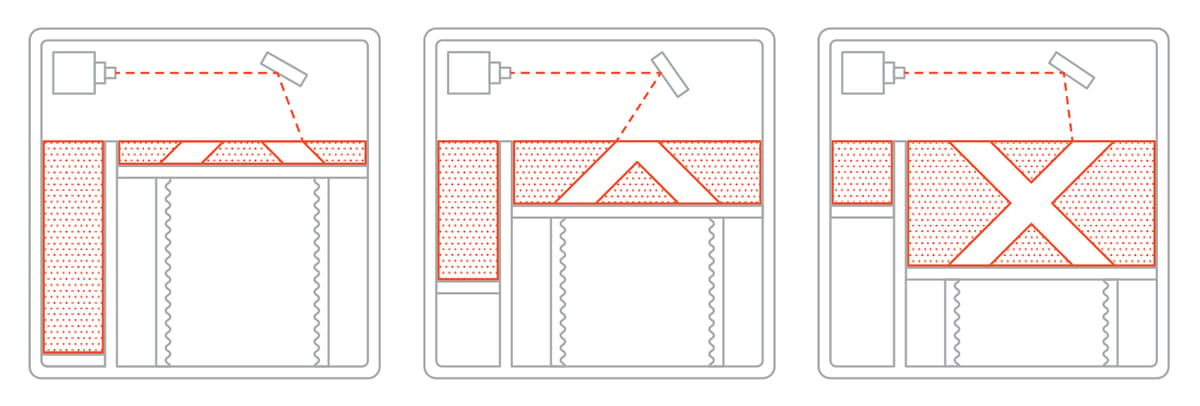
Powder Bed Fusion technology and polymer powder is generally known as Selective Laser Sintering (SLS). The process works as follows: First, a wiper deposits a very thin layer of thermoplastic powder onto a build platform. Two mirrors direct a laser’s path across the surface selectively sintering and solidifying a cross-section of the object inside this build area.
Once the entire cross-section is traced, the build platform will move down one layer thickness in height. The wiper deposits another layer of powder on top of the recently traced layer, and the laser will sinter the next cross-section of the object onto the previously sintered cross-sections. This process is repeated until the part is fully manufactured.
SLA places only few geometric constrictions on the design. In contrast to vat polymerization and material extrusion, no support structures are required. Powder which hasn’t been sintered remains in place to support the object and can be re-used for future builds. This economical use of material reduces the overall 3D printing price in comparison to other technologies.
Another advantage of SLS reducing the 3D printing price is that parts can be distributed in the build volume in all three dimensions. This allows the parallel manufacturing of unrelated components in a single build operation. As a result, this 3D printing technology can be highly cost-effective, provided the components are expertly stacked. The downside are longer lead times than material extrusion and a higher 3D printing price for functional applications.
As industrial patents expire, SLS technology is becoming increasingly common and lower cost. Hence, you can expect that the 3D printing price of this process will decrease over the next couple of years.
Materials: Thermoplastic powder
Efficiency: Slower than Material Extrusion
Applications: Functional parts with good mechanical properties, Low run part production (Aerospace & Automotive), Visual Prototypes (Design & Architecture)
Typical Target Group: Professional, Industrial
Price Span: from $10,000 to more than $250,000
Material Jetting
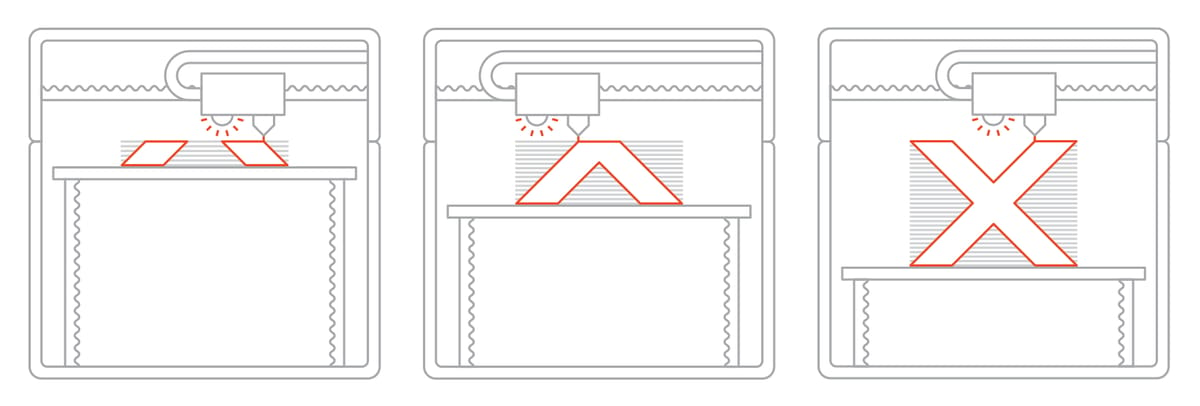
MJ (Material Jetting) uses droplets of UV sensitive material that are selectively deposited and instantly cured on a build plate. As in other 3D printing processes, objects are built up layer-by-layer.
The advantage of MJ printers is to fabricate multiple objects in a single line with no impact on build speed. As long as models are correctly arranged, and the space within each build line is optimized, MJ is able to produce parts more rapidly than other types of 3D printer.
The mechanism of the Material Jetting print head allows for different materials to be printed within the same object. One common application of this technique is to fabricate support structures from a different material to the model being produced. Allowing the easy and quick removal of the support structure.
Although material jetting is the quickest of all the 3D printing technologies on the market, it is also costlier than SLA/DLP, when used for visual prototypes. Hence, spending this 3D printing price makes only sense when you need highly accurate visual models or molds quicker than other technologies can provide.
Materials: Resin
Efficiency: Fastest 3D Printing Technology
Applications: Fullcolor product prototypes (Design & Architecture); Injection mold-like prototypes, Low run injection molds (Aerospace & Automotive); Training tools and models (Medical)
Typical Target Group: Professionals, Industrial Manufacturing
Price Span: from $10,000 to more than $250,000
Binder Jetting
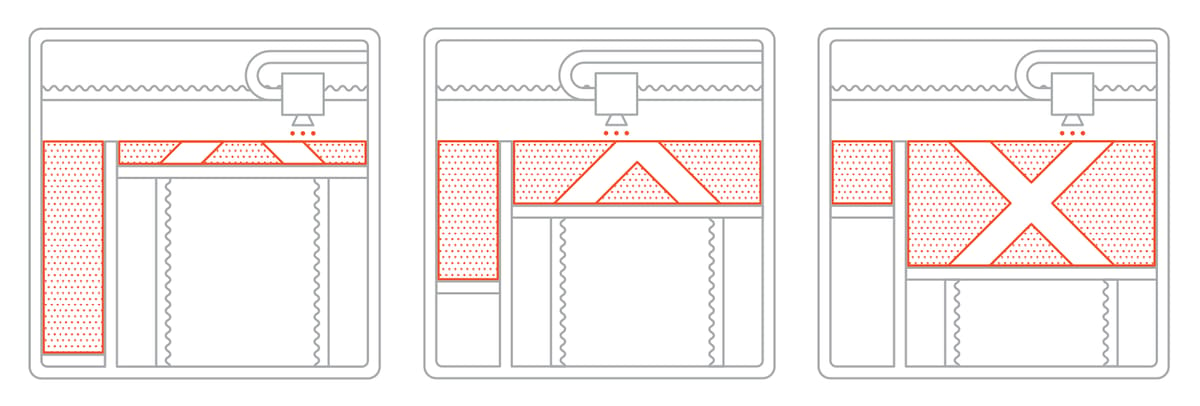
Binder Jetting resembles SLS in the use of powdered raw material. However, instead of sintering the powder with a laser, binder jetting printers move a print head over the the powder surface depositing binder droplets. These droplets bind the powder particles together to produce each layer of the object.
When a layer has been printed, the powder print bed is lowered, a new layer of powder is spread over the recently binder-jetted layer and the print head jets another set of binder droplets. This process is repeated until a complete object is formed.
The object is then left in the powder to cure and harden. Once the process is complete, the object is removed from the powder bed and any unbound powder is removed using compressed air for re-use. Making this technology economical and decreasing the 3D printing price.
Binder Jetting parts can be used as low-cost sand casting cores and molds that are able to create geometries of a complexity unthinkable with traditional methods. Multicolor prints are enabled by adding a secondary print head that jets color.
Another application of Binder Jetting is the production of metal objects. Metall powder is bound using a polymer binding agent. Producing metal objects using Binder Jetting allows for the production of complex geometries well beyond the capabilities of conventional manufacturing techniques. However, without additional steps, a part made with metal Binder Jetting will have poor mechanical properties.
Materials: Sand, Metal, Multicolor
Efficiency: Fairly Quick
Applications: Functional metal parts (Aerospace & Automotive); Full color models, Sand casting (Design & Architecture)
Typical Target Group: Professional, Industrial
Price Span: from $50,000 to more than $250,000
Powder Bed Fusion for Metals (DMLS, SLM & EBM)
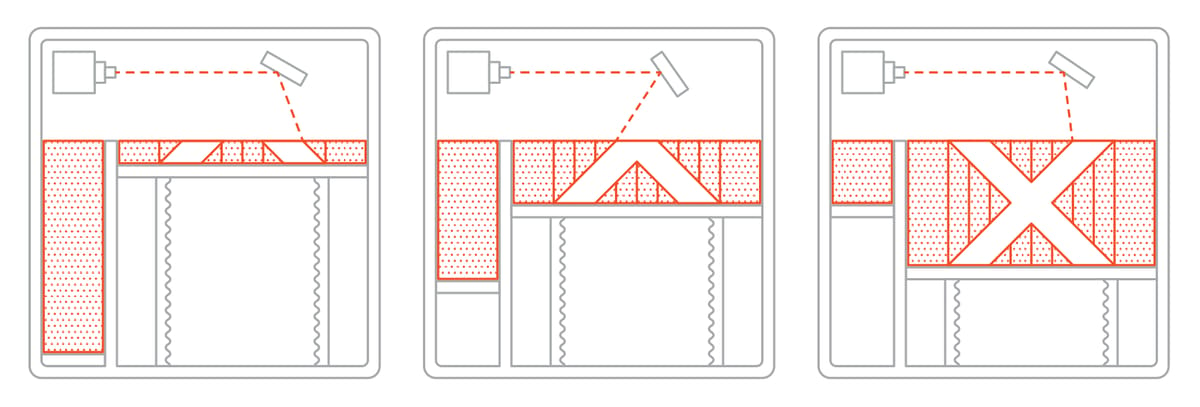
Powder Bed Fusion technology using metal powder is often known as metal 3D printing. However, specialists prefer the terms Direct Metal Laser Sintering (DMLS), Selective Laser Melting (SLM) and Electron Beam Melting (EBM). The differences in these technologies stem from the use of different energy sources: lasers or electron beams.
The process works as follows: First, a wiper deposits a very thin layer of metal powder onto a build platform. Two mirrors direct a laser’s path (DMLS and SLM) or an electron beam (EBM) across the surface selectively solidifying a cross-section of the object inside the build area. Once the entire cross-section is traced, the build platform will move down one layer thickness in height and the process is repeated until the part is fully manufactured.
Although all three processes are similar, they achieve different results. DMLS are fused together on a molecular level. SLM and EBM parts form one homogeneous part.
Compared to SLM and DMLS types of 3D printing technology, EBM generally has a superior build speed because of its higher energy density. Also important to note is that EBM parts are fabricated in a vacuum, and the process can only be used with conductive materials.
The ability to create virtually any shape is highly attractive, but it comes at the cost that this technology has the highest 3D printing price of all.
Materials: Metal
Efficiency: One of the slower and energy-intensive 3D printing technologies.
Applications: Functional Metal Parts (Aerospace & Automotive); Dental Restorations, Surgical Tools (Medical)
Typical Target Group: Professional, Industrial
Price Span: from $250,000
Materials
For a detailed guide of 3D printing materials, read this article. The Complete Guide to 3D Printing Materials
Plastic
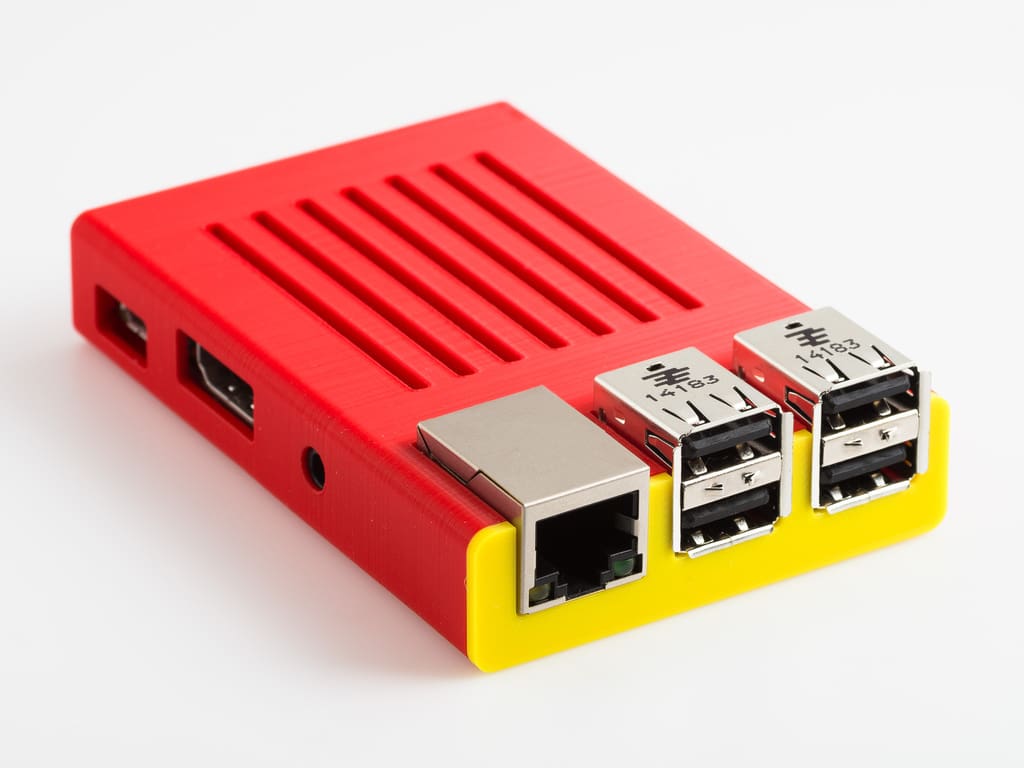
Plastic is both the cheapest and the most versatile 3D printing material. The most noticeable property of plastics is that many varieties come in a broad range of colors. Some materials that are marketed as “metal” or “wood” materials contain tiny amounts of these materials to give the optical properties, but not their mechanical features.
Others exhibit stunning abilities that allow you to use these materials as functional parts. Such as conducting electricity enabling many exciting new design opportunities for the maker community, but also raising the 3D printing cost. HIPS is a variety that is often used as a support material in FDM and SLA printing, as it dissolves in Limonene. A highly useful capability that relieves its users from the odious task of removing supports manually. PEEK and ULTEM plastics is developed for high-performance parts. This means parts made of this plastic are highly resistant to stress, temperature, and chemicals. Due to its excellent properties, PEEK and ULTEM are used in the most demanding applications of the automotive, aerospace, chemical and medical industries.
On the downside, materials like ABS are notoriously fickle. Hence, it is advisable to use a heated printing bed to control the cooling of this material and prevent warping. Also, 3D printing materials like plastic filaments degrade from humidity in the surrounding air. To keep the 3D printing price down, store it in vacuum bags or containers.
Technologies Material Extrusion, SLA/DLP , SLS, Material Jetting, Binderjetting
Properties Strong, Light, High resolution, Somewhat flexible, Conductive
Applications Architectural Models, Concept Models, DIY Projects, Visual Arts (Design & Architecture); Manufacturing (Aerospace & Automotive)
Price $ (very affordable) – $$ (affordable)
Metal
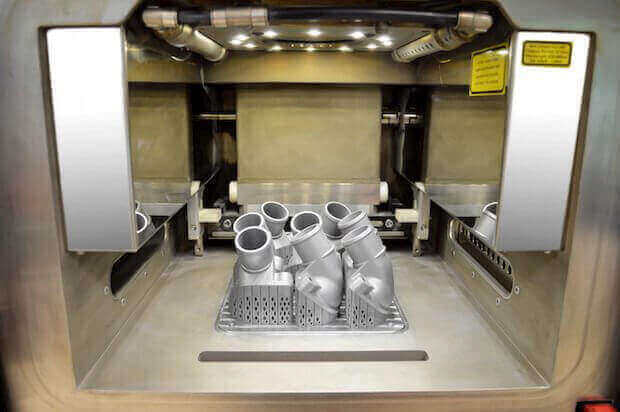
Metal 3D printing has become more important over the last years in the aerospace, automotive and medical industries for the ability to produce complex designs that don’t require additional welding or machining. It goes without saying that both the metals and the 3D printers required are among the most advanced in additive manufacturing and thus increase the 3D printing price.
The range of metals that can be 3D printed is broad and the spectrum of possibilities is even broader. For example, Aluminum can be 3D printed to create highly complex geometries that are resistant to mechanical stress and high temperatures. This makes Aluminum suitable for low-cost prototypes and functional models in the automotive and aerospace industries. Titanium and Nickel alloys are popular 3D printing materials for manufacturing technical components since these materials are strong and very durable. Conversely, this allows engineers to make the components thinner, resulting in e.g. more fuel-efficient airplanes. Hence, the long-term savings of metal materials should also be factored into the overall 3D printing price.
Metal can be 3D printed using a variety of technologies. Apart from Direct Metal Deposition that creates solid components, Binder Jetting and SLM can be used to produce “green” parts that require firing in kilns to make them solid. Jewelry metal parts are usually made by printing them first in wax and then casting into the mold.
The downside is that metals demand a lot more expertise in terms of engineering than any other 3D printing material which in turn increases the overall 3D printing price.
If you want to learn more about metal 3D printing, read our extensive article: The Best Metal 3D Printers in 2025
Technologies SLA/DLP , SLS, Binderjetting, DMLS, EBM, SLM
Properties Bio-compatible, Light, Strong, Heat resistant, Corrosion resistant, High resolution, Smooth surface
Applications Jewelry, Surgical Tools, Dental Restorations (Medical), Functional Prototypes, Manufacturing (Aerospace & Automotive)
Price $$$ (reasonable)–$$$$$ (very expensive)
Resin
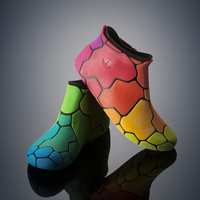
Many resins are designed to simulate the different properties of traditional materials: There is a resin that is comparable to wax and is used to create wax molds in investment casting. If you need bio-compatible properties there is a resin for that. There is even one that has the properties of ceramics – after 3D printing, you can process the part in a kiln and use it like any ceramic part.
PolyJet resins go even one step further. Not only can they blend material properties like durability, heat resistance, transparency, etc. to specifications, they can also reproduce every given part with the full range of colors. This opens up avenues for many new applications. While other material can only create a visual approximation of the finished product, PolyJet parts can also convincingly simulate its touch, feel, and functionality.
In sum, resins are an excellent choice for functional and concept models. This material is particularly suited to producing large parts in a short span of time, while still maintaining a high degree of detail. Some resins are even strong enough to be machined after curing. Also, high-temperature resins are a cost-effective means to produce injection molds for small-scale production of prototypes. The popularity of SLA resins stems from its superior speed and accuracy. The downside is that the 3D printing price of resin is still higher than that of many other materials.
Technologies SLA/DLP, Material Jetting
Properties High resolution, Smooth surface, Flexible, Heat resistant, Transparent
Applications Conceptual Models, Functional Models (Design & Architecture), Tooling (Aerospace & Automotive)
Price $$$ (reasonable)
Multicolor
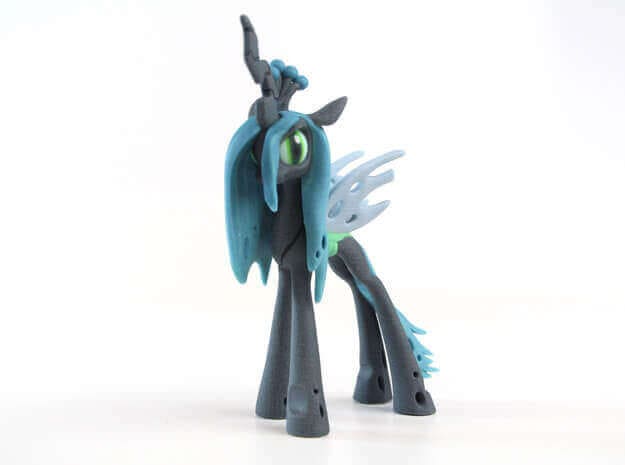
Variously referred to as “gypsum”, or “sandstone”, multicolor is one of the 3D printing materials able to create spectacular full-color parts in one process. To enhance the quality of the colors and add strength the part is coated with a protective layer of epoxy resin. Since multicolor parts that are exposed to water will discolor, leaving you with a muddy white model. Although multicolor is highly useful for producing faithful architectural models and conceptual prototypes, the 3D printing price of this material is less than you would expect.
However, you should be aware that components made from this material are as fragile as porcelain. Allowances for the materials weakness should be made already during the design process. Considering the fickle nature of multicolor, it comes as no surprise that it is mostly used for architectural models, conceptual prototypes, and visual art projects.
Although multicolor material is comparatively affordable, there are a few ways to lower the 3D printing price. Hollow the model and create escape-holes in your 3D design. Allowing the raw powder to escape will significantly decrease the 3D printing price.
Technologies Material Extrusion, Binderjetting,
Properties Fragile, Full-color
Applications Conceptual Models (Design & Architecture)
Price $$ (affordable)
Wax
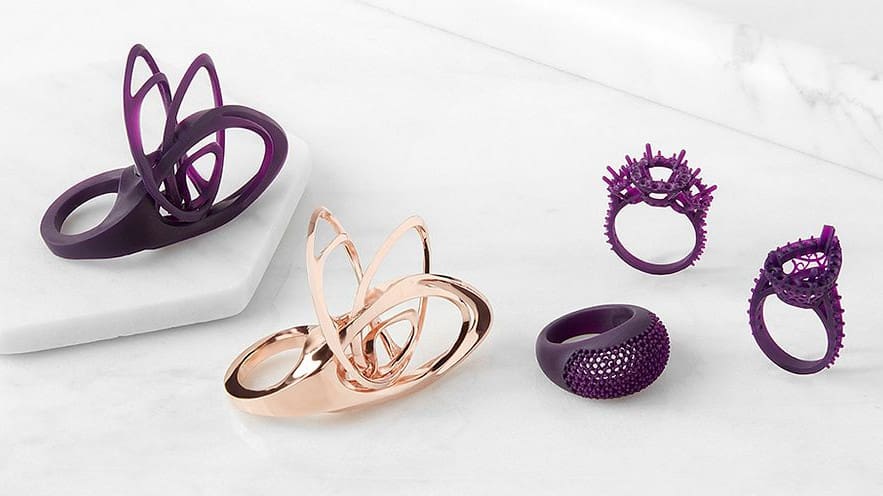
Wax 3D prints are usually not the end product, but an essential stage in the lost wax casting technique of metal components. The process is as follows. A wax model is 3D printed to produce molds, it is covered in plaster or other suitable materials. The wax is then removed by heating the mold. The model is cast by pouring molten metal into the mold. Once the metal has cooled, the mold is removed.
The advantage of the lost wax casting technique is the stunning high resolution (0.025mm) that can be achieved. Hence, it is often employed to create customizable jewelry at a comparatively low 3D printing price. The second industry that uses this kind of 3D printing material is the dental medicine industry. Ultimately, the 3D printing price can rise depending on what sort of metal you use.
Wax is an extremely versatile 3D printing material: Experts can create complex structures that require supports by using waxes of different melting points and melting the supports off at low temperatures.
Technologies SLA/DLP, Material Jetting
Properties High resolution, Smooth surface
Applications Manufacturing (Jewelry, Dentistry)
Price $ (very affordable)
Ceramics
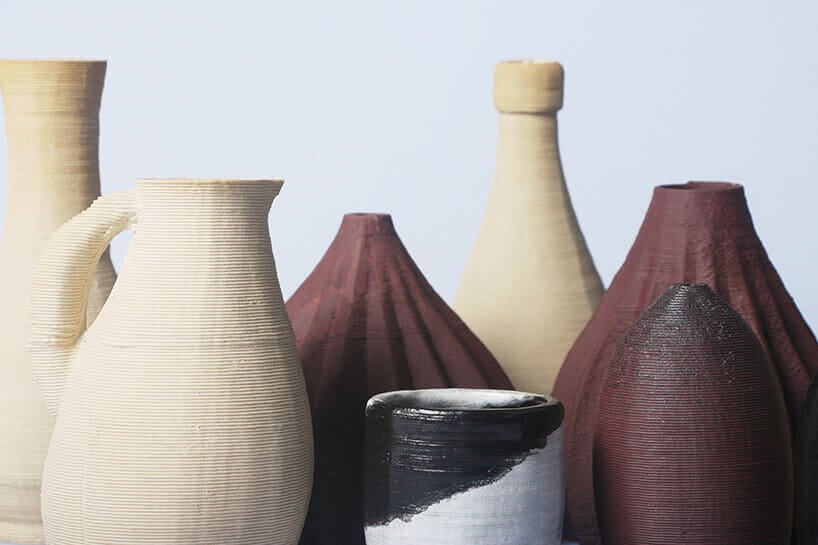
Ceramics extend the range of applications in this 3D printing materials guide for everyday use at a low 3D printing price. The raw material used is clay that is made up of fine-grained particles, other minerals and a certain amount of water which lends some plasticity to the material. In addition, there are resin-varieties available for use in SLA 3D printing.
3D printing ceramic is nowadays so common that custom ceramics like coffee mugs have become staple items for online 3D printing services. With dedicated extruder systems like WASP’s Clay Extruder Kit 2.0, ceramics have also become a viable material for consumer 3D printing. Wannabe potters can choose between varieties of glass, porcelain, and silicon-carbide. Pottery stands out as heat resistant and hard wearing material at a low 3D printing price that is nowadays mostly used in the arts, but also for tableware and dental implants.
When a ceramic part has been printed off it is then turned into solid pottery in a kiln. The water evaporates and the particles melt into each other, setting the shape and increasing the strength of a given component. For a glossy finish, it is covered in glaze and then kilned a second time. Ceramic 3D prints can be made using printers like humble FDM, and more sophisticated methods like SLA enable a higher degree of detail, but increase the overall 3D printing price.
Don’t miss:
Technologies Material Extrusion, SLA/DLP, Binderjetting
Properties Heat resistant, Fragile, Porous surface, Hard wearing
Applications Visual Arts, Manufacturing (Design & Architecture)
Price $$ (affordable)
Paper
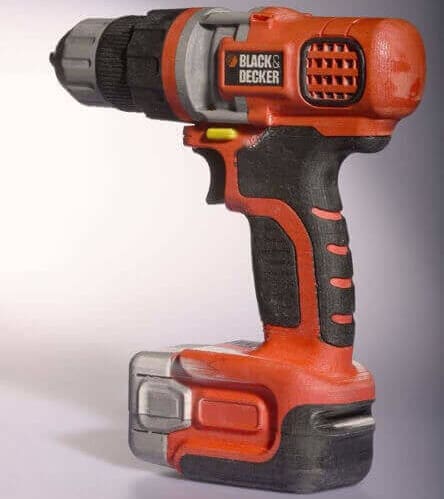
Thanks to Selective Deposition Lamination (SDL) the humble copy paper from the office store around the corner has made its way into 3D printing. As you would expect from anything made of paper, SDL parts are light-weight, easy to recycle and boast a low 3D printing price. (In fact, the manufacturers claim the cost of SDL is 10-20% of the 3D printing price of other technologies.)
SDL parts have a wood-like feel and are fully colored, making them a popular choice for architectural and other conceptual models. Another application of paper is producing investment and sand casting patterns at a lower 3D printing price than other technologies.
On the downside, paper parts are less durable than parts made of most other 3D printing materials and you won’t get the same level of detail as with other 3D printing materials offering full-color prints like PolyJet Resins or multicolor.
Technologies Selective Deposition Lamination
Properties Cost-effective, Easy to recycle, Full-color
Applications Conceptual Models (Design & Architecture)
Price $$ (affordable)
3D Printing Prices in Selected Industries
Aerospace & Automotive
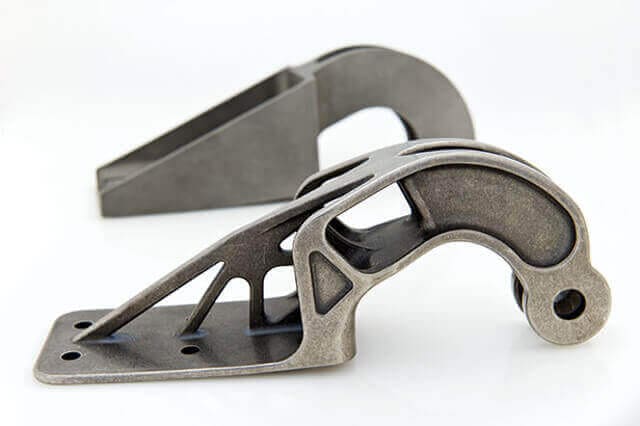
One of the virtues of 3D printing technologies is the possibility to generate geometrically accurate parts. This capability can be harnessed for both manufacturing and testing.
Since 3D printed prototypes have the exact same dimensions as the finished products, they are the perfect fit for rigorous testing and simulation scenarios that are part of the research and development process. Engineering and design teams of automotive manufacturers already use plastic 3D-printed components for rapid prototyping. In addition, to creating functional parts using FDM printers more recent generations of material jetting 3D printers have enabled engineers to test not only the mechanical properties of their designs in quick iterations.
Engineers have relied on rapid prototyping for decades since it has the indisputable benefit of producing geometrically accurate models quickly. These prototypes differ from merely visual models in that they can be subjected to rigorous testing and simulation scenarios. This is made possible through technologies like Material Jetting or Direct Metal Laser Sintering (DMLS) that allows engineers to print their 3D files in materials that have the same properties as the finished product.
Moreover, not only is it now possible to print up to six materials simultaneously, but material jetting 3D printers are also able to accurately reproduce the RGB value of a given part. Although the 3D printing price of this technology is quite steep, the ability to test design changes quickly decreases costs by a huge margin. Manufacturers who have tested the technology estimate that it has cut the cost of producing prototypes in half.
What technology gives you the best 3D printing price largely depends on the number of parts required and the time available. For example, Direct Metal Laser Sintering (DMLS) and other metal 3D printing processes can produce fully functional parts within a week. However, if you have more time it may be worth to use investment casting, meaning the pattern is 3D printed. The lead time can increase to up to three weeks, but you will get 3D printing price of only about 10% of the DMLS price.
Design & Architecture

If you focus on the shape or the volume of a design as in certain stages of the workflow of architects and designers, you want to start blocking out monochromatic volumes. An effective way is using Stereolithography, Fused Deposition Modeling, or Selective Laser Sintering. For one, the two technologies mentioned first are feasible with many desktop 3D printers. So, it is relatively easy to access these technologies. In addition, you can get stunning looking monochromatic models at a great 3D printing price.
In case you need more advanced models or prototypes, technologies like Material Jetting are effective tools to create lifelike visual models with fine details and smooth surface finishing. Parts created in this way are an effective way to study the form, fit and overall visual appeal of a product. These concept models can be used to test the marketability of products with desired demographics long before the final product launches. Material Jetting and other technologies are used industries that need to emphasize the aesthetics of their products.
You can even go further. Thanks to 3D printing, your test groups can physically touch and examine object (created through Direct Metal Laser Sintering etc.) that are almost indistinguishable from the finished product both in their mechanical and visual properties. It is clear that these technologies are costly. However, the 3D printing price of these prototypes is still lower than that of traditionally manufactured mock-ups.
This kind of prototype models is also often used at a later stage of the product development process. They can be put on display at trade fairs to market an upcoming product. Marketing material is often produced long before a functioning model of the product is available, concept models are a fast and inexpensive way to photograph your product long before the product launch.
Medical
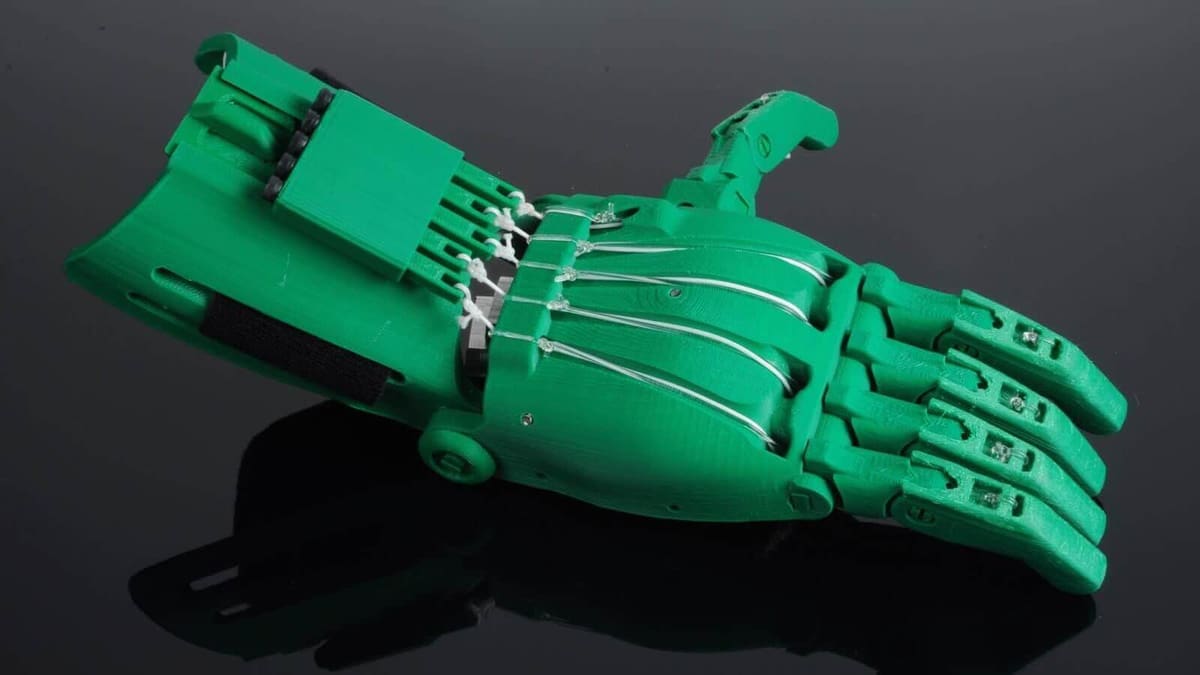
The medical industry has found its own set advantages that make 3D printing a worthwhile addition to the field.
Because every human body is different, custom solutions are required to ensure the highest standard of care for every patient. In the past, this has been a cause for high costs. With the advent of 3D printing, it is possible to create custom orthotic and prosthetic devices that are bespoke to every patient at a competitive 3D printing price.
Another issue is the kind of materials used. Because medical parts often come into direct contact with the human body, sterilizability is paramount. A growing number of materials that fulfill this requirement are available. Compatible 3D printing technologies include FDM, SLS, DMLS, and SLM.
Another aspect of materials is the 3D printing price. The technologies used to create medical parts are powerful and extremely efficient. Unlike traditional methods, 3D printing is capable to only generate parts that use the material actually needed. Such efficiency reduces the 3D printing price and is a small contribution to saving the environment.
3D printed arm prosthetics cost between $50 and 200, differences in price can be accounted for through size of the patient which determines the amount of material needed and the technical complexity that is needed to achieve dexterity. for example, patients that have been equipped with arm prosthetics by the e-NABLE project are able to peel bananas or even paint. These prosthetics are powered using the elbows or wrists of their wearers.
Jewelry
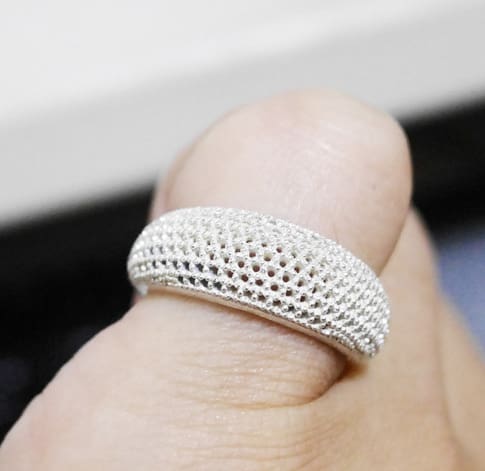
3D printing has long since made its entry into the jewelry industry. It has not only transformed the design process, but also the manufacturing of jewelry. In the olden times, creating jewelry casting patterns was a time-consuming and costly process. As they were carved by hand or CNC machines, restricting the range of possible shapes and sometimes leading to products that deviated from the original design.
3D printed casting patterns, on the other hand, can be produced in a short very span of time, reducing lead times substantially. In addition, these patterns enable a whole new range of shapes that were hitherto impossible. All 3D printed wax patterns are made exactly alike, which reduces cost, as consistently produced parts are equivalent with less scrap. Another advantage of 3D printed wax patterns is the ability to produce different patterns at the same time, allowing competitive prices for one-off pieces. In sum, jewelers get their money’s worth out of the 3D printing price they invest.
The usual process is 3D printing the design with wax-resin on SLA printers as lost wax casting patterns. Producing jewelry directly using DMLS or SLM is also possible, but will add substantially to the 3D printing price.
The designs can also be printed in plastic for discussion and testing with target groups, without spending money on precious metals. This kind of rapid prototype is particularly informative since the wax models used in the investment casting process can be printed on the same 3D printers, giving you complete confidence that what you have tested and studied is consistent with the final product.
Hence, going from testing to production in the jewelry industry has almost become child’s play with 3D printing prototyping. While the initial 3D printing price for the equipment may seem high at first, but in the long run, it will pay off by the increased productivity, consistent quality, and customization options.
License: The text of "3D Printing Price Report 2018" by All3DP is licensed under a Creative Commons Attribution 4.0 International License.
CERTAIN CONTENT THAT APPEARS ON THIS SITE COMES FROM AMAZON. THIS CONTENT IS PROVIDED ‘AS IS’ AND IS SUBJECT TO CHANGE OR REMOVAL AT ANY TIME.
